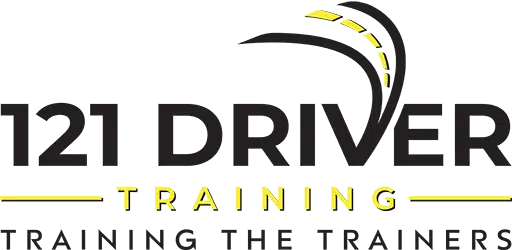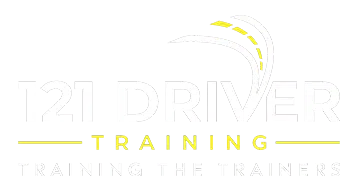Night-time driving presents its unique set of challenges, with decreased visibility, altered perception, and increased fatigue all contributing to a significantly different driving experience compared to daytime hours. As driving instructors, it is our responsibility to ensure that our learner drivers are well-prepared to tackle these challenges, building confidence and competence in navigating the roads safely at all hours.
At 121 Driver Training, our Driving Instructor Course provides instructors with the tools and knowledge required to teach their learners the essential skills for night-time driving effectively. From adjusting to reduced visibility to managing glare from oncoming headlights, our instructors are well-equipped to guide their learners through the complexities of driving after dark.
Join us as we explore the nuances of night-time driving and learn how to bring these essential skills to our learner drivers, ensuring they are equipped with the knowledge and experience necessary to navigate the roads safely, no matter the time of day or night.
1. The Importance of Night-Time Driving Skills for Learner Drivers
Learning to drive at night is an essential aspect of comprehensive driver education. The skills gained during night-time driving sessions equip learners with the ability to tackle a wide range of challenges that they might not encounter during daytime hours. Key reasons to teach night-time driving include the following:
- Reduced visibility: Night-time driving requires learners to adapt to limited visibility and recognise potential hazards under low-light conditions.
- Altered perception: Darkness can affect depth perception and peripheral vision, making it more challenging to judge distances and make safe manoeuvres.
- Increased fatigue: Night-time driving often leads to increased drowsiness, making it essential for learners to understand the importance of managing fatigue and taking appropriate breaks.
- Building confidence: Gaining experience in night-time driving helps learners build confidence in their ability to navigate different driving environments safely.
2. Strategies for Teaching Night-Time Driving Skills
To effectively prepare learners for night-time driving, consider incorporating the following strategies into your teaching sessions:
- Gradual introduction: Begin by introducing night-time driving during the early evening hours, allowing learners to gradually acclimatise to the changing light conditions before moving on to darker conditions.
- Adapting to reduced visibility: Teach learners to adjust their driving practices to suit low-light conditions, such as reducing speed, maintaining a greater following distance, and using their headlights appropriately.
- Managing glare: Help learners develop techniques for managing glare from oncoming headlights or harsh streetlights, such as averting their gaze, adjusting the rearview mirror, or using the night setting if available.
- Fatigue management: Discuss strategies for managing fatigue during night-time drives, such as planning rest stops, avoiding heavy meals before driving, and staying well-hydrated.
3. Practical Tips for Night-Time Driving Lessons
To enhance the effectiveness of night-time driving lessons, consider these practical tips:
- Pre-drive check: Before embarking on a night-time driving session, review the vehicle’s lights, mirrors, and windows, ensuring that all equipment is in working order and adjusted correctly.
- Route planning: Choose a route that is suitable for night-time driving practice, taking into consideration the learner’s experience level and potential hazards or challenges along the way.
- Frequent feedback: Offer regular feedback during night-time driving sessions, addressing any areas of weakness or uncertainty whilst reinforcing positive driving behaviours.
- Encourage self-reflection: Ask learners to reflect on their night-time driving experiences and discuss their perceived strengths and areas for improvement, fostering a growth mindset and a proactive approach to self-improvement.
4. Integrating Night-Time Driving into the Curriculum
In order to develop well-rounded drivers, it is crucial to integrate night-time driving skills into your overall curriculum. Some recommendations for achieving this integration include the following:
- Scheduling regular night-time driving sessions: Ensure that night-time driving practice becomes a consistent part of your learners’ education, allowing them to build confidence and skills over time.
- Developing customised lesson plans: Create lesson plans tailored to your learners’ night-time driving needs, focusing on specific areas for improvement and allowing them to progress at a pace that suits their skill level.
- Assessing learner progression: Evaluate your learners’ night-time driving skills on an ongoing basis, providing targeted feedback and guidance to facilitate growth in their abilities.
- Encouraging parental involvement: Communicate the importance of night-time driving practice with your learners’ parents or guardians, encouraging them to provide additional support and practice opportunities outside of formal lessons.
Conclusion
Equipping our learner drivers with the skills and confidence to navigate the unique challenges of night-time driving is a crucial aspect of comprehensive driver education. As instructors at 121 Driver Training, we have a vital role to play in guiding our learners through the intricacies of driving after dark, ensuring that they are capable of tackling any situation they may encounter, regardless of the time of day.
By understanding the importance of night-time driving skills, incorporating effective teaching strategies, and integrating these essential skills into our curriculum, we can create a new generation of confident, competent, and truly well-rounded drivers.
Enrol in 121 Driver Training’s comprehensive driving instructor course in Australia today to equip your learners with the essential night-time driving skills vital for their safety and success on the roads. Discover how our comprehensive approach to driver education can make a significant difference in preparing your learners for any driving scenario.




